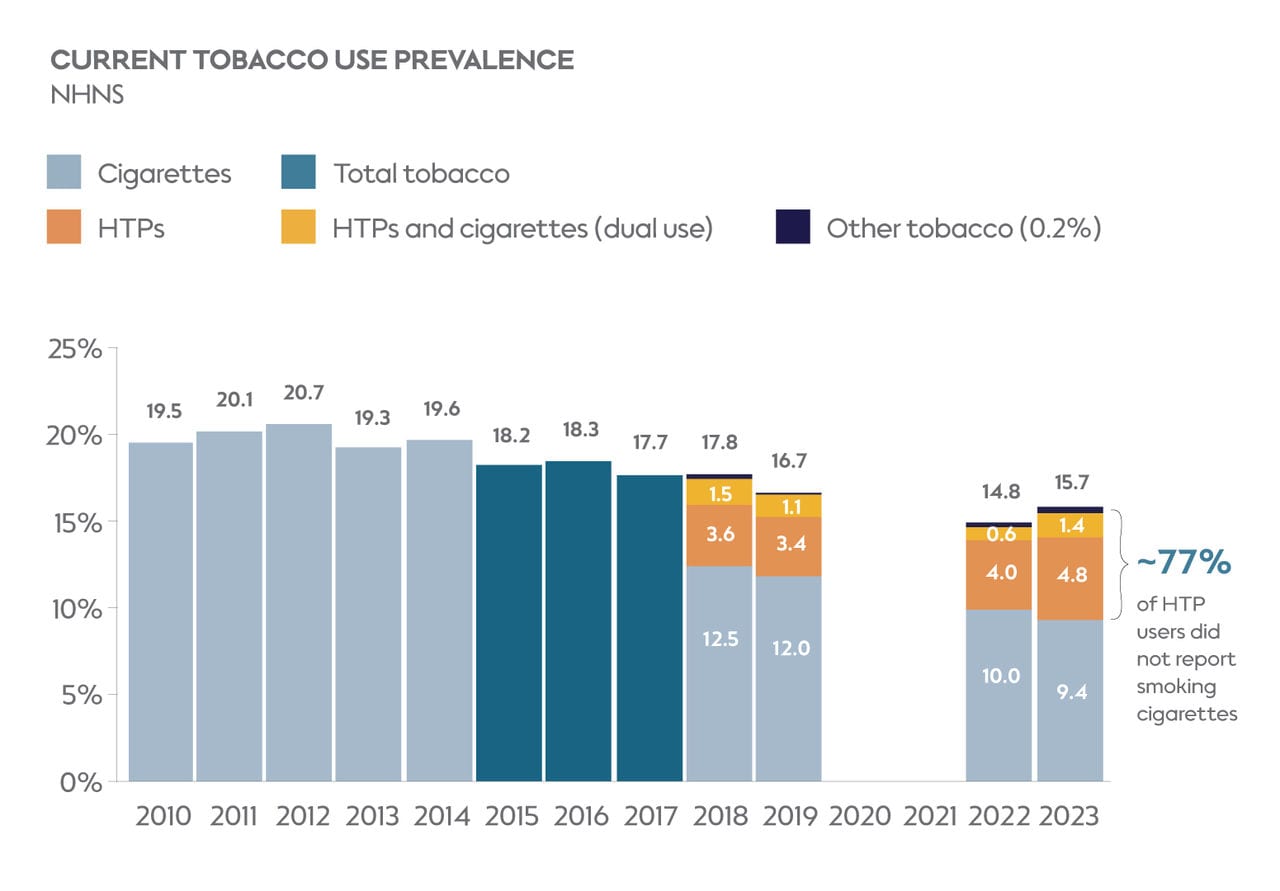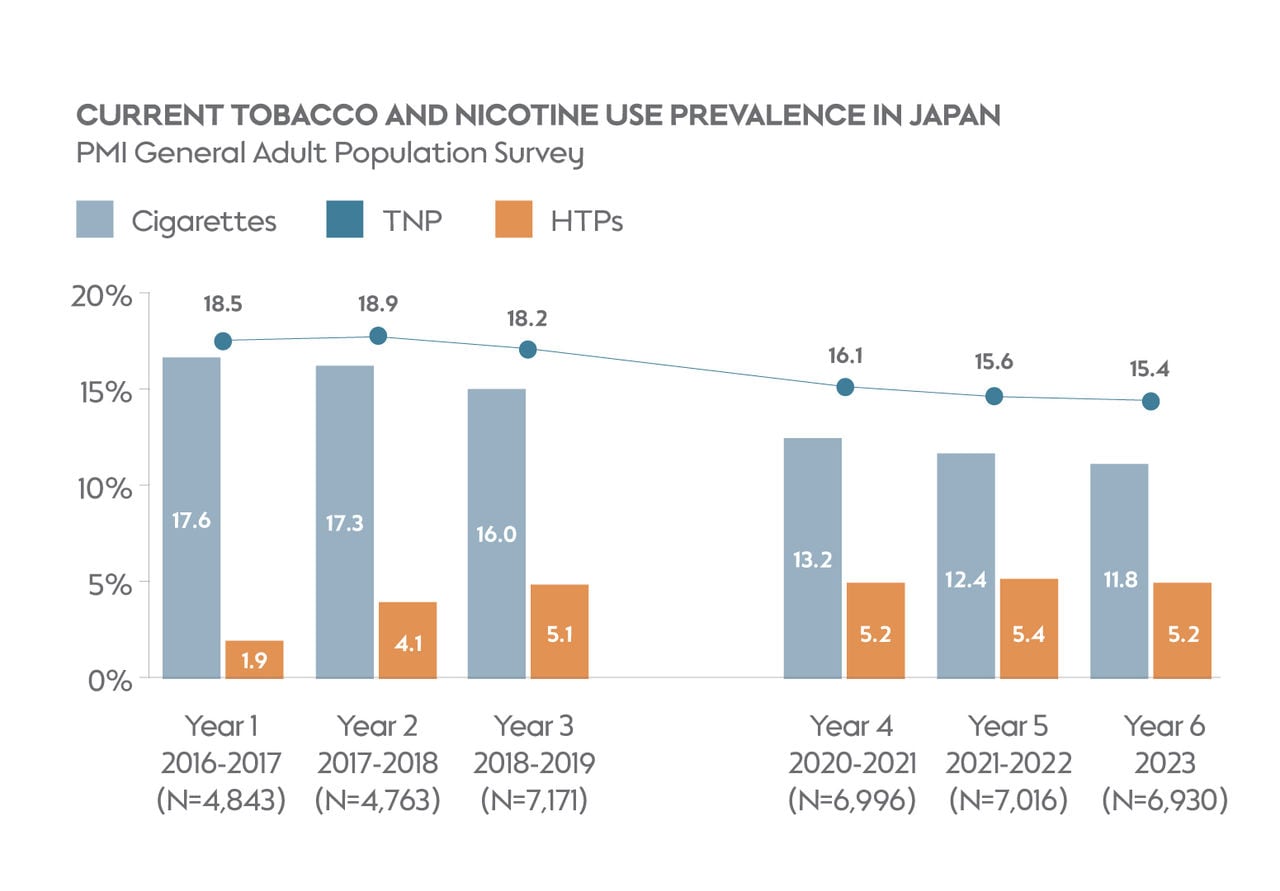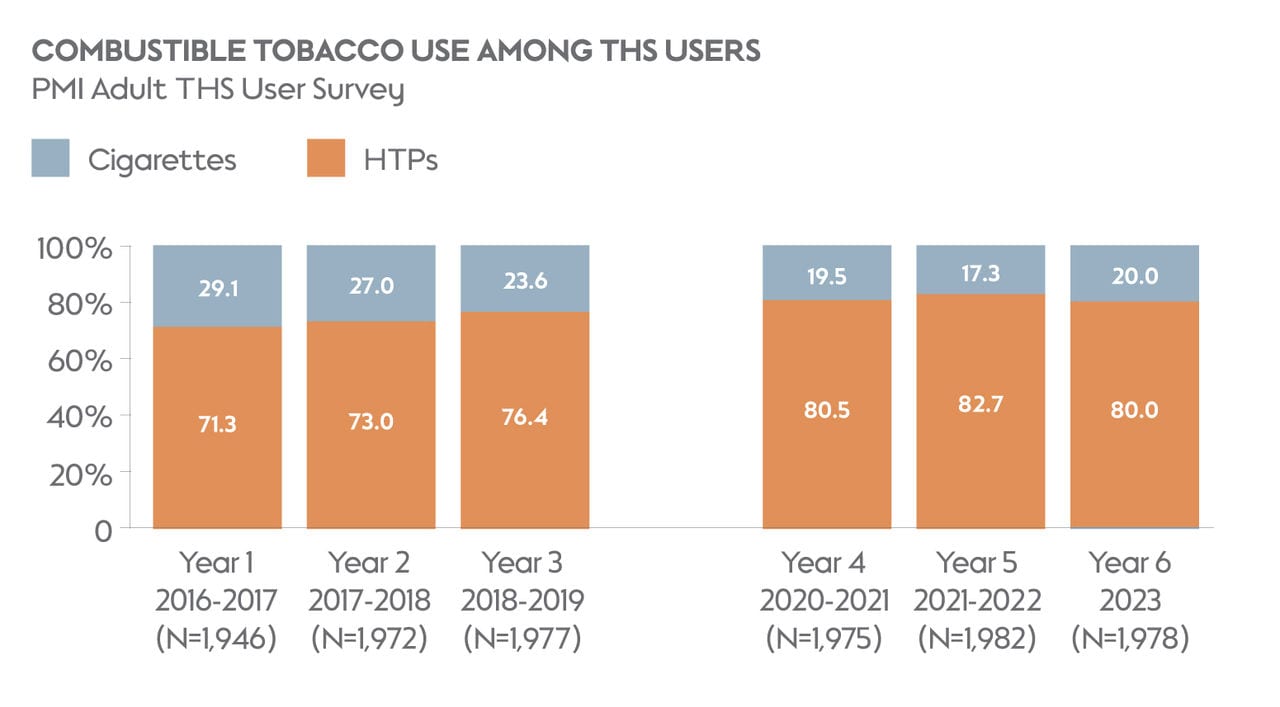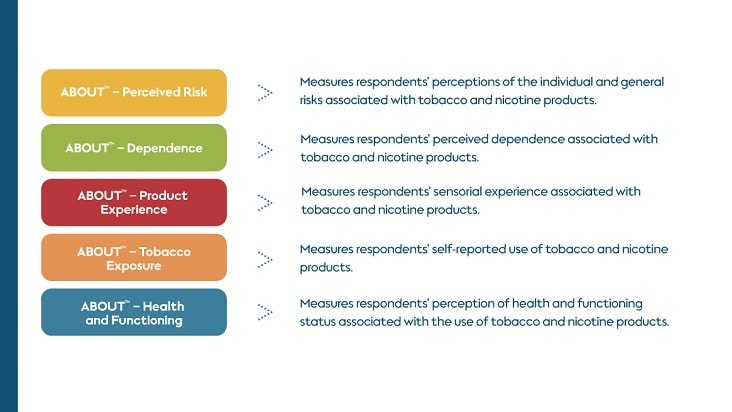How are perception and behavior studies conducted?
Perception and behavior studies involve both current tobacco users and nonusers. Most of these studies are based on self-reported outcomes and therefore involve the administration of survey questionnaires. For example, studies among current tobacco users include questions to measure perception and actual use behavior of smoke-free products, while studies among nonusers primarily focus on product perception and likelihood of future use.
Our perception and behavior studies are conducted in a way that is scientifically robust, complies with all applicable laws and regulations, and meets international guidelines or guidance, such as those set by the FDA. In all our perception and behavior studies, measures to protect the rights and welfare of the study subjects are put in place.
To ensure standardization and harmonization of measurements across different studies and products, PMI has developed the ABOUT™ (Assessment of Behavioral OUtcomes related to Tobacco and nicotine products) Toolbox, a suite of Consumer Reported Outcome Measures (CROM).
Read more about the ABOUT™ Toolbox on our website here.
What can we learn from perception and behavior studies?
Overall, the study data suggest that the observed shift from combustible to smoke-free product use over time is in line with the principles of tobacco harm reduction and suggests that the marketing of THS and other smoke-free products is likely to have a positive impact on public health. This shift also suggests that smoke-free products are acceptable alternatives to cigarette smoking.
An important goal of our perception and behavior research is to examine the factors that affect switching, so the results can be applied to future product development.
These factors include, but are not limited to:
- Perceived impact on health and physical factors, such as perceptions of reduced harm from switching from cigarette to smoke-free products.
- Sensorial aspects (e.g., taste, satisfaction, and enjoyment).
- Practical aspects of smoke-free product use compared with cigarette use (e.g., issues of accessibility/availability and maintenance).
- Financial implications of switching (e.g., if it is cheaper in the long run than cigarette smoking).
What can these studies tell us about the impact of smoke-free products on public health?
Perception and behavior studies measure several key aspects that are important from a public health perspective. For example, our studies measure consumers’ perceptions of health risks associated with the use of cigarettes and smoke-free products. This is important because, as mentioned above, risk perception influences whether smokers decide to switch to these better alternatives or not.
Risk perception also impacts use patterns of smoke-free products—for example, whether a smoker decides to completely switch to these products or continue using cigarettes (dual use). Moreover, these studies also provide evidence in terms of frequency and intensity of product use. This type of behavior data provides valuable evidence to measure the extent to which adult smokers find smoke-free products acceptable and satisfying, supporting their switch from cigarettes. At the same time, we also measure whether individuals understand that our smoke-free products are not risk free. Finally, and importantly, postmarket perception and behavior research provides data on whether nontobacco users initiate tobacco use with smoke-free products and whether former tobacco users relapse or reinitiate tobacco use through these products.
All of this data can be used to help regulators evaluate the potential role of smoke-free products in moving adult smokers away from smoking.
What can we learn from postmarket studies on prevalence, uptake, and the use patterns of TNPs?
At PMI, we are conducting postmarket studies to better understand the real-world use of our smoke-free products. Following the commercialization of THS, we have been conducting repeated cross-sectional studies in Japan, Italy, and Germany, including the General Adult Population Survey and the Adult THS User Survey.
We now have a number of years of data on the evolution of TNP use prevalence in Japan, and our repeated cross-sectional studies results are aligned with the Japanese Ministry of Health, Labour and Welfare’s yearly National Health and Nutritional Survey (NHNS).
Those studies show that smoking prevalence in Japan is rapidly declining, with the percentage of Japanese adults who smoke dropping from 19.6% in 2014 to 10.8% in 2023.
The NHNS data also demonstrates that overall tobacco product use has not increased, indicating that many existing tobacco users in Japan are switching completely to heated tobacco products (HTPs), rather than using HTPs in addition to cigarettes. At the same time, data from PMI’s General Adult Population Survey show that uptake of HTPs (which includes THS) among tobacco users in Japan has been increasing over the years of the study.
By year 6 (2023) of the PMI General Adult Population Survey, the proportion of HTP users who do not smoke had reached 65%. This was a similar trend to that seen in the NHNS, where the data showed that approximately 77% of HTP users were not smoking cigarettes in 2023. These results were further corroborated by the PMI Adult THS User Survey (data shown in the graph below), which found that in the last 3 years of the survey around 80% of THS users had not smoked tobacco products.
In Italy, data from our studies is aligned with data from the Italian National Institute of Statistics (ISTAT) and Italian National Institute of Health (ISS) surveys. According to the 2022 ISS survey, consumption of HTPs (which includes THS) tripled, from 1.1% in 2019 to 3.3% in 2022. This equates to approximately 1,700,000 more Italian smokers now using HTPs.
In Germany, our studies show that the prevalence of HTP use, including THS use, has increased over time, yet it remains at a comparatively lower level than in Japan and Italy.
What have we learned about THS use among never smokers and former smokers?
Finally, and very importantly, our cross-sectional studies also show that THS use by adults who had never smoked or had already quit using TNPs is very low and that more than 96% percent of THS users were already using tobacco products when they switched to THS.
Overall, this shift from combustible product use to smoke-free product use is in line with the principles of tobacco harm reduction. The availability of THS is likely to have a positive impact on public health across countries, given that the majority of adult smokers managed to move away from smoking completely and that their use among unintended audiences is low.
What does the risk perception data tell us about the potential public health impact of THS?
Risk perception is an important factor that influences adult smokers to switch to smoke-free products as well as impacting smoke-free product use patterns. In other words, it is important to truthfully and accurately communicate the health risks associated with using smoke-free products, in particular, in comparison with smoking cigarettes.
Our repeated cross-sectional studies in Japan, Italy, and Germany show that THS users understand that there is a health risk associated with using THS, but also that the health risk is lower than the risk associated with smoking cigarettes.
What have we learned about users’ perception of health with THS use?
Using the ABOUT™ – Health and Functioning instrument, we have conducted yearly surveys in Japan, Italy, and Germany, asking users whether they feel that switching from cigarettes to THS has led to perceived improvements in their health.
Overall, THS users report improvements in coughing, breathing, oral health, physical health (e.g., fitness), hygiene, beauty, and overall health since switching from cigarettes. These improvements were more pronounced among THS users who switched completely (i.e., stopped smoking cigarettes) than among THS users who remained dual users, showing the importance of using smoke-free products exclusively.









